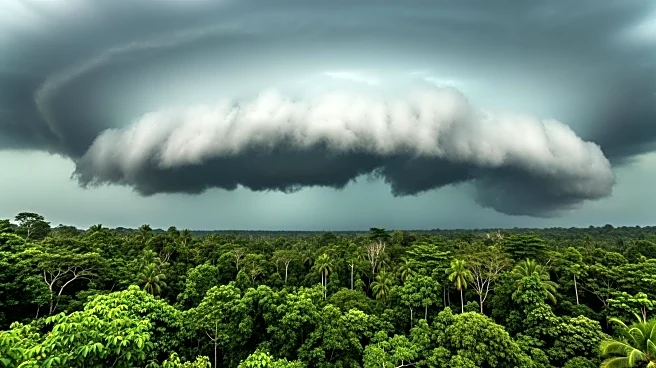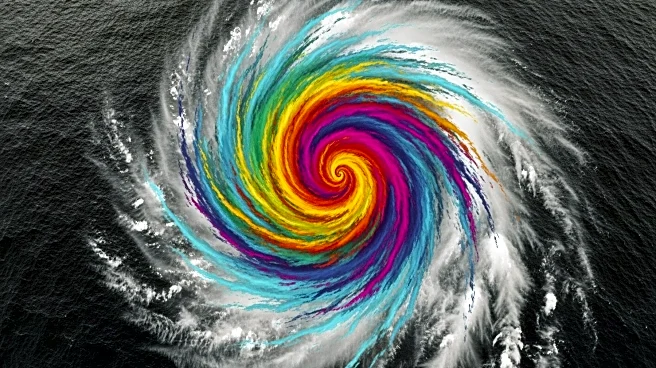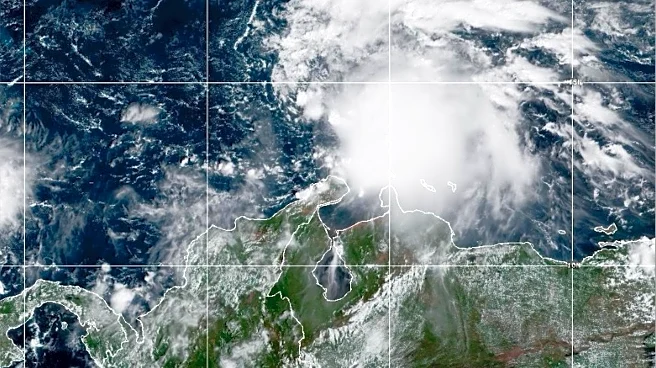What's Happening?
Tropical Storm Melissa has impacted Haiti, resulting in one death and five injuries due to flooding in the central region. The storm is expected to bring up to 14 inches of rain to southern Haiti and the southern Dominican
Republic, posing significant risks of flash flooding and landslides. The United Nations has prepared over 100 emergency shelters in Haiti's southern region and allocated $4 million for relief efforts. The storm is moving north with maximum sustained winds of 45 mph and is expected to intensify, prompting a hurricane watch for Jamaica and a tropical storm warning for the southwestern peninsula of Haiti.
Why It's Important?
The impact of Tropical Storm Melissa is significant due to Haiti's vulnerability to natural disasters, exacerbated by widespread erosion, gang violence, poverty, and weak governance. The storm's potential to cause life-threatening flash flooding and landslides could further strain the country's limited resources and infrastructure. The U.N.'s allocation of $4 million for relief efforts highlights the urgent need for support in managing evacuation, shelter, and sanitation. The storm's progression and intensification could also affect Jamaica and the Dominican Republic, leading to broader regional challenges.
What's Next?
As Tropical Storm Melissa continues to move north, it is expected to strengthen into a hurricane by Saturday and possibly reach Category 4 status by Tuesday. Jamaica has prepared 881 shelters and closed schools and courts in anticipation of the storm. The Dominican Republic has closed schools, businesses, and government agencies in affected areas. The U.S. National Hurricane Center warns of significant risks, urging residents in flood-prone areas to seek higher ground. The situation remains dynamic, with potential for rapid intensification and further impact on regional infrastructure and safety.
Beyond the Headlines
The storm's impact on Haiti could exacerbate existing health challenges, including a recent cholera outbreak. The deterioration of basic services in the capital, where only 11% of health facilities remain fully operational, underscores the critical need for effective disaster response and long-term infrastructure improvements. The storm also highlights the broader implications of climate change and the increasing frequency and intensity of weather-related disasters in vulnerable regions.












